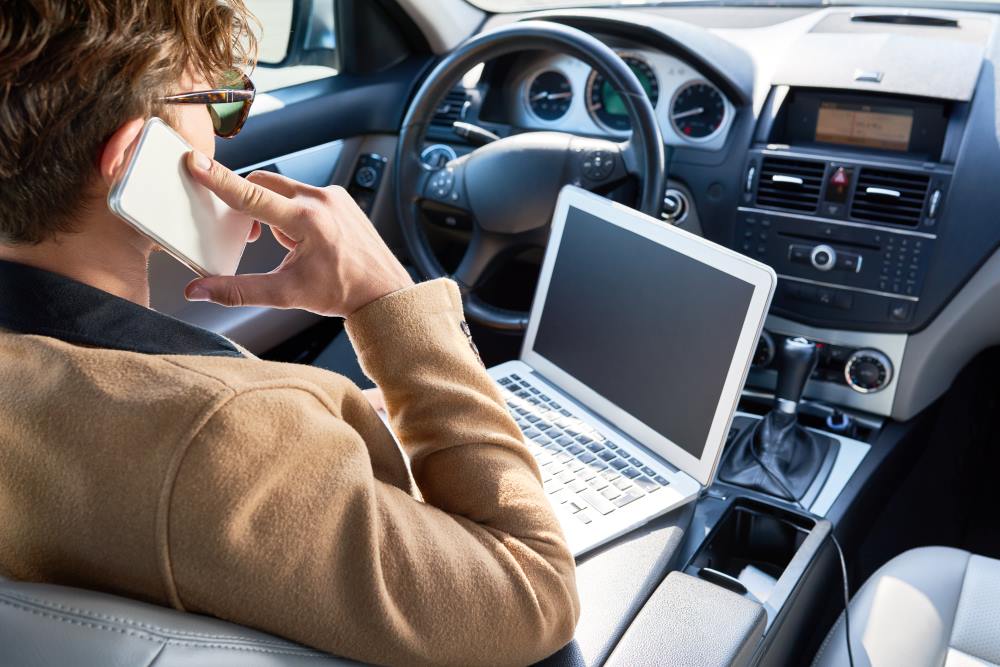9000+ Cashless Garages
96% Claims Settled (FY 24-25)

Accessibility Options

General

General Products
Simple & Transparent! Policies that match all your insurance needs.


37K+ Reviews
7K+ Reviews
Scan to download

Life

Life Products
Digit Life is here! To help you save & secure your loved ones' future in the most simplified way.


37K+ Reviews
7K+ Reviews
Scan to download

Claims
Claims
We'll be there! Whenever and however you'll need us.


37K+ Reviews
7K+ Reviews
Scan to download

Resources
Resources
All the more reasons to feel the Digit simplicity in your life!
 Tools & Calculators
Tools & Calculators


37K+ Reviews
7K+ Reviews
Scan to download

37K+ Reviews
7K+ Reviews
Select Preferred Language
Our WhatsApp number cannot be used for calls. This is a chat only number.

Enter your Mobile Number to get Download Link on WhatsApp.
You can also Scan this QR Code and Download the App.
9000+ Cashless Garages
96% Claims Settled (FY 24-25)



In our modern, connected world, Wi-Fi in your car makes travelling much more enjoyable, as passengers can entertain themselves, work, or use navigation apps. WiFi in a vehicle may seem tricky to install, but it is easier than one may think. You can turn a car into a mobile hotspot with the right equipment.
In this article, we will take you through setting up WiFi in your car. From choosing the right device to installation, we'll cover everything you need to know about staying connected on the go. Let's dive into the steps to how to install WiFi in a car.


Installing Wi-Fi in your car can significantly enhance your driving experience. It enables you and your passengers to stay connected while you enjoy long trips or run errands. Here are some reasons why it's worth considering:
Setting up Wi-Fi in your car is more straightforward than one might think. Depending on what a person wants or needs, there are several ways to get their vehicle online. Here are the top methods:
Using a Mobile Hotspot Device
The easiest way to get an internet connection inside a car is to use a smartphone or tablet for a mobile hotspot, which can provide stable connectivity by activating the 4G or 5G connection. This alternative is quite convenient since most of us carry our smartphones everywhere. However, there is a potential for draining battery life and running into data caps.
Hotspot Devices
If you experience weak internet connectivity inside your car, a small router or mobile hotspot device could provide a solution. These mobile hotspot devices offer greater portability and improved connectivity compared to those found on smartphones or tablets. The battery lives in coordination with these hotspot devices. However, you would have to purchase a dedicated plan for the service.
Inbuilt Car WiFi
Many modern cars have built-in integrated systems. This makes it easy to establish an internet connection inside a car. These routers have very strong signals and fast speeds. They can also be used to send diagnostic reports and upload over-the-air updates for the car.
Wireless Routers
Offering a more robust option than some of the above types, wireless routers for cars cover longer ranges at faster speeds—a viable option for downloading and uploading large files or live streaming. Like mobile hotspots, routers require their own data plan or subscription, which is generally more expensive.
OBD-II Devices
While OBD (On-Board Diagnostics) ports are used for vehicle diagnostics, they can also be connected to enhance Wi-Fi connectivity and provide high-speed internet. These devices are more mobile than built-in routers but are less portable than smartphones or tablets. OBD-II devices are generally much more expensive than mobile hotspots.
When adding Wi-Fi to your vehicle, consider various factors for the best experience. Those include:
Connectivity Options
When choosing a Wi-Fi solution, it is worth checking for a stable one. Select a Wi-Fi solution with a proven reputation for reliability. While hotspots and routers depend on cellular networks, high coverage is crucial.
Installation Cost
This is a matter of personal choice. Portable mobile hotspot devices or smartphone hotspots would likely be the most affordable option. On the other hand, installing built-in permanent routers at a higher cost should be expected.
Power Consumption
WiFi devices can consume significant battery power in cars, so be sure to opt for solutions designed with minimal energy consumption in mind. Some mobile hotspots can be powered via your car's USB port.
Ensuring Data Plans
Ensure you pick a data plan that fits your usage. Some hotspot devices and car systems need additional data plans. Assess your data needs based on how often you use the Wi-Fi in the car.
Network Compatibility
Ensure the Wi-Fi device or system you purchase is compatible with the network bands available in the areas you travel to for coverage. There are instances where some devices can operate on particular networks.
Regular maintenance will keep your car's Wi-Fi running smoothly. Here are some tips for long-lasting, efficient performance:
Regular Software Updates
Always update the mobile hotspot or in-car Wi-Fi router regularly. It provides better connections and has enhanced security features, eventually increasing long-term performance.
Check Signal Strength
Always check signal strength when you notice reduced speed or connectivity. It could mean a network change or optimal placement of the mobile hotspot to ensure complete coverage and a good connection.
Keep Devices Clean
Over time, dust and dirt accumulate on Wi-Fi devices, causing them to malfunction. Regular cleaning can prevent the build-up that can affect performance. Also, ensure that the car charger ports are kept free from debris.
Monitor Data Usage
Knowing how much data you've been using helps ensure you don't exceed the limits of your plan. Most mobile hotspots allow you to monitor your usage through an app. Monitoring allows you to control the data you use.
Lock Your Network
Change the Wi-Fi password and encrypt it so that it is not accessible to others, allowing them to log onto your network. This establishes a robust connection that cannot be easily compromised by unauthorised data theft.
Installing Wi-Fi in a car can be beneficial, but it's always better to weigh the pros and cons it. It's an excellent convenience for long trips, as streaming or browsing social media will keep passengers entertained. If you are someone who works on the way to your destination, Wi-Fi in the car will keep you connected and productive.
Even kids will have access to their online educational apps while on a trip. However, maintaining Wi-Fi will be a continuing cost. You will need to pay for data plans, in addition to the upkeep of devices. Additionally, the connection quality will vary from place to place based on signal strength. Therefore, before making a decision, consider your needs and budget.
Having WiFi in your car is a game-changer. With it, you'll have permanent internet access no matter where you go. Additionally, in-car WiFi provides safety through emergency services and ensures you are always connected with your loved ones via social media and video calls. Each trip is worthwhile, thanks to the convenience and benefits of in-car WiFi.
A car can have WiFi capabilities with a mobile device, a phone with a hotspot facility enabled, or built-in systems with WiFi functionality.
A car can have WiFi capabilities with a mobile device, a phone with a hotspot facility enabled, or built-in systems with WiFi functionality.
Yes, you can use it. When you use your cell phone to share a data connection, you can enjoy seamless Wifi in the car.
Yes, you can use it. When you use your cell phone to share a data connection, you can enjoy seamless Wifi in the car.
The installation costs may vary, depending on the range. Mobile hotspot devices begin at around ₹400 - ₹3000. Built-in systems or permanent routers can cost hundreds, including installation fees.
The installation costs may vary, depending on the range. Mobile hotspot devices begin at around ₹400 - ₹3000. Built-in systems or permanent routers can cost hundreds, including installation fees.
The best option is to use a dedicated mobile WiFi router for the car or a WiFi system on board, if your vehicle has one. Both provide reliable connections.
The best option is to use a dedicated mobile WiFi router for the car or a WiFi system on board, if your vehicle has one. Both provide reliable connections.
WiFi OBD II is built for diagnostics. However, they can also provide internet access in your car.
WiFi OBD II is built for diagnostics. However, they can also provide internet access in your car.
This depends on the device. Most hotspots can support up to 10 devices, while the more expensive mobile routers can handle more.
This depends on the device. Most hotspots can support up to 10 devices, while the more expensive mobile routers can handle more.
Yes, installing a permanent WiFi router in your car can provide a stable and long-term internet solution.
Yes, installing a permanent WiFi router in your car can provide a stable and long-term internet solution.
In-car WiFi can be secure if WPA2 encryption and a strong password are used. It is essential to monitor connected devices to prevent potential threats.
In-car WiFi can be secure if WPA2 encryption and a strong password are used. It is essential to monitor connected devices to prevent potential threats.
Many newer cars have built-in WiFi, often requiring a subscription to a mobile data plan. Check your vehicle's features to see if it includes this option.
Many newer cars have built-in WiFi, often requiring a subscription to a mobile data plan. Check your vehicle's features to see if it includes this option.
Consider connectivity options, cost, power consumption, data plans, and specific usage needs when selecting a WiFi solution for your car.
Consider connectivity options, cost, power consumption, data plans, and specific usage needs when selecting a WiFi solution for your car.
To activate WiFi in your car, either turn on the built-in WiFi feature through your car's settings, connect a mobile hotspot device, or enable the hotspot on your smartphone.
To activate WiFi in your car, either turn on the built-in WiFi feature through your car's settings, connect a mobile hotspot device, or enable the hotspot on your smartphone.
Yes, in-car WiFi can be used while driving. However, ensuring that your devices don't distract the driver or interfere with safe driving practices is essential.
Yes, in-car WiFi can be used while driving. However, ensuring that your devices don't distract the driver or interfere with safe driving practices is essential.
The range of in-car WiFi depends on the type of device. A mobile hotspot typically has a range of 30-50 feet, allowing passengers in the car to connect to the internet.
The range of in-car WiFi depends on the type of device. A mobile hotspot typically has a range of 30-50 feet, allowing passengers in the car to connect to the internet.
Yes, using WiFi in your car can drain your phone's battery, especially if you use it as a hotspot. Consider keeping your phone plugged in or using a separate device to provide WiFi.
Yes, using WiFi in your car can drain your phone's battery, especially if you use it as a hotspot. Consider keeping your phone plugged in or using a separate device to provide WiFi.
Yes, you can install WiFi in older cars using mobile hotspot devices, dedicated routers, or aftermarket solutions to provide internet connectivity.
Yes, you can install WiFi in older cars using mobile hotspot devices, dedicated routers, or aftermarket solutions to provide internet connectivity.